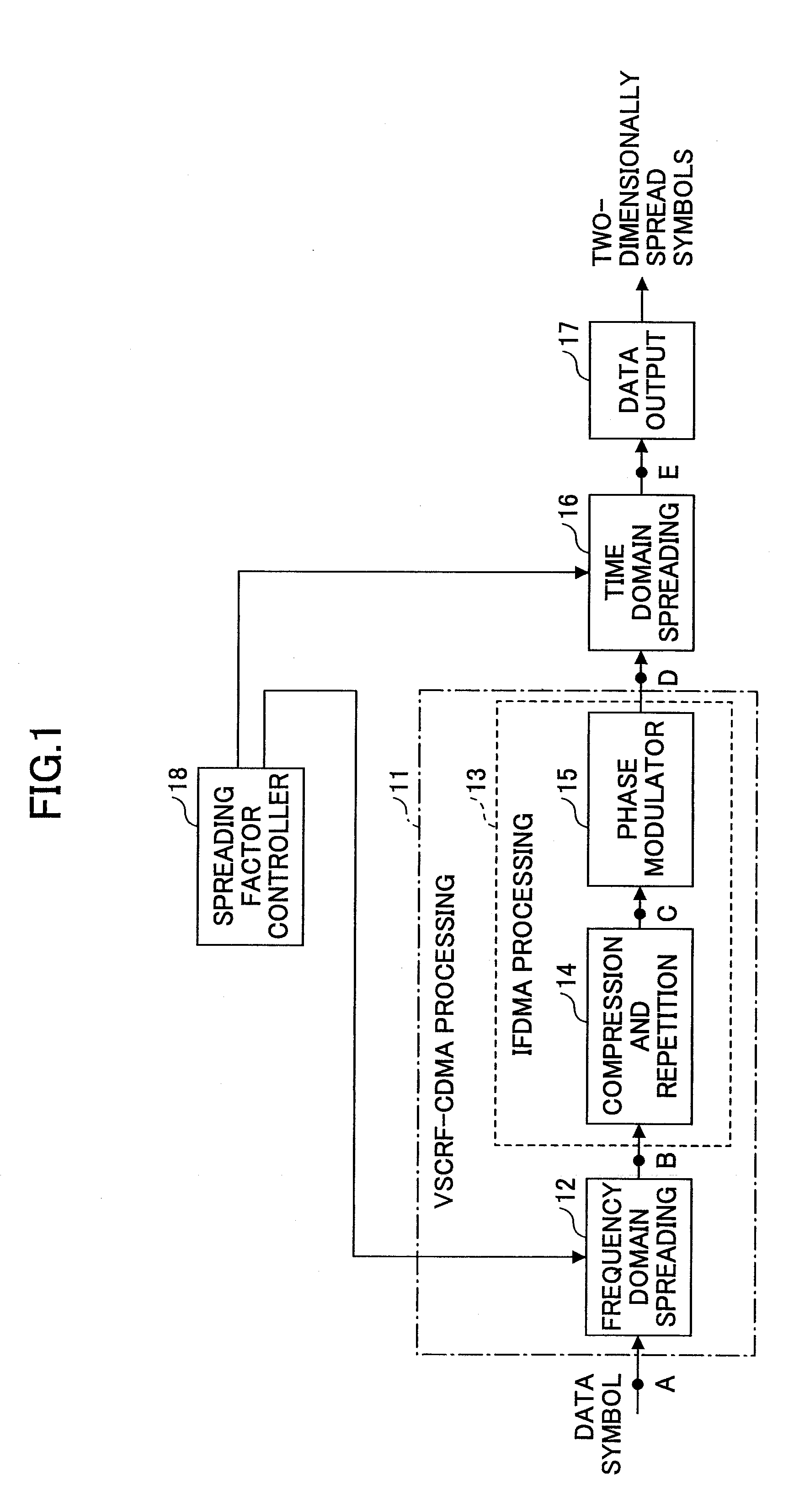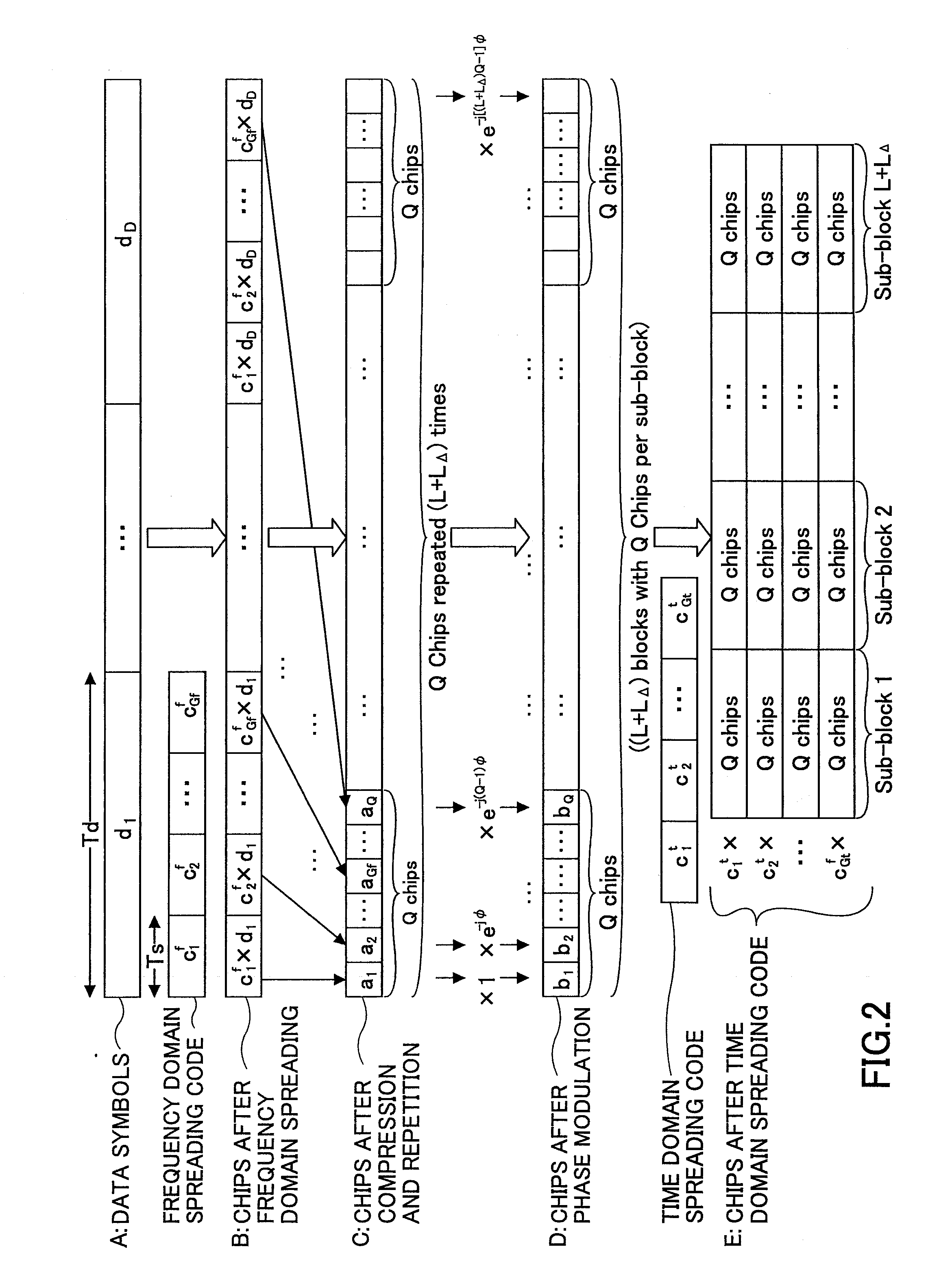Two-dimensional code spreading for interleaved fdma system
a two-dimensional code and interleaved technology, applied in the field of wireless communication techniques, can solve the problems of limiting the maximum data rate and system capacity that can be supported for available bandwidth, high peak-to-average power ratio (papr), channel estimation errors, and high sensitivity to frequency offset, so as to reduce other-cell interference (oci) and multiple access interference (mai), and complexity in the receiver structur
- Summary
- Abstract
- Description
- Claims
- Application Information
AI Technical Summary
Benefits of technology
Problems solved by technology
Method used
Image
Examples
embodiment 1
[0041]FIG. 1 is a block diagram of the transmitter of a 2CS-OFDMA transceiver of a single user. The transmitter is typically applied to mobile or cellular devices; however, it may be applied to other devices. The transmitter includes a VSCRF-CDMA processing unit 11, a time domain spreading unit 16, a data output unit 17, and a spreading factor controller 18. The VSCRF-CDMA processing unit 11 includes a frequency domain spreading unit 12, and an IFDMA processing unit 13 which further includes a compression and repetition unit 14 and a phase modulator 15.
[0042]The VSCRF-CDMA processing unit 11 spreads data symbols using a VSCRF-CDMA scheme, and outputs the data symbols spread in the frequency domain. To be more precise, data symbols having been subjected to channel coding and data modulation are input to the frequency domain spreading unit 12, which unit multiplies the input data symbols with a spreading code to perform code spreading in the frequency domain and supplies the code spre...
PUM
 Login to View More
Login to View More Abstract
Description
Claims
Application Information
 Login to View More
Login to View More - R&D
- Intellectual Property
- Life Sciences
- Materials
- Tech Scout
- Unparalleled Data Quality
- Higher Quality Content
- 60% Fewer Hallucinations
Browse by: Latest US Patents, China's latest patents, Technical Efficacy Thesaurus, Application Domain, Technology Topic, Popular Technical Reports.
© 2025 PatSnap. All rights reserved.Legal|Privacy policy|Modern Slavery Act Transparency Statement|Sitemap|About US| Contact US: help@patsnap.com



